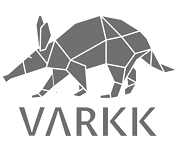|
RFC2324 posted:I was surprised to hear puppet seconded, given last I heard it was considered old and superseded. It didnít come back, thereís just a lot of people/companies sticking to it because they already have it all set up and running. Maintaining it is easier/cheaper than rewriting it.
|
|
|
|

|
| # ? May 31, 2024 19:28 |
|
LochNessMonster posted:It didnít come back, thereís just a lot of people/companies sticking to it because they already have it all set up and running. Maintaining it is easier/cheaper than rewriting it. I ended up using it just because puppet manifests seemed so easy to work with. You just need to figure out the order they apply in
|
|
|
|
RFC2324 posted:I was surprised to hear puppet seconded, given last I heard it was considered old and superseded. ??? What has replaced puppet?
|
|
|
|
xzzy posted:??? I mostly hear people talking about chef, or whatever replaced satellite.  Sadly, my last couple gigs have been windows centric, so I don't get to play with these outside of labbing lately.
|
|
|
|
xzzy posted:??? Mostly ansible in combination with awx/tower. I hardly see any companies switch to puppet but Iíve seen plenty move to Ansible. It could be thatís purely because of the type of companies I work with or people I interact with.
|
|
|
|
Chef was completely off my radar, we evaluated it like 10 years ago when looking to move away from cfengine and decided it was not going to work for us. I ain't saying Puppet is the best CM ever, I hate many things about it, but as far as I knew it and Ansible were the only players in town these days.
|
|
|
|
There's a world of difference between "the new hotness", "still maintained and perfectly suitable, just not generating buzz anymore" and "truly an older, less useful paradigm, but still used by a huge number of non bleeding edge companies". If we're talking CM and not how CM (for companies, anyway, not individuals like the person who kicked this thread off) is at risk of obsoletion from containerization, all of the major post-Cfengine players are still in active use/development. Depending on your needs and their strengths/weaknesses, any of them would be fine for managing a handful of personal systems or VMs. My 2c on them, having mostly used Chef and Salt:
|
|
|
|
Having used puppet, salt and now Ansible i'll toss in my opinion, not that anyone asked! I used puppet in a place which wasn't using puppet to its fullest potential, its easy and I wrote a few custom modules for it ( installing java a certain way some other stuff ) and its relatively fine. As a more python person I felt it was a bear to use when doing anything ruby related. However I did appreciate the custom facts piece, foreman was also a pretty neat piece of software which gave everything a decent UI to manage from. I didn't like that we needed puppet enterprise to run commands via puppet to a subset of systems, though this might have changed. Salt I really like, it can be extremely fiddly especially when writing templates for the first time. Lots of errors returned are not the most user friendly. I also found that writing automated tests of the code ( mostly spinning up docker containers, applying the code to the container then writing tests ) was tougher than using puppet, since Rspec/Serverspec was so easy to use. However the flexibility I felt in salt is something, especially the reactor system, that is really nice to work with Ansible I've used the least, I'm using it to template AMIs using packer within AWS. It's really strong i feel in this role. I've also written a few libraries for it. I found that to be a bit of a pain from a testing standpoint but this might be outside the scope of the conversation. I like how it provides a way to set something to state and not have an agent, thought I think for longer running systems this could be a disadvantage.
|
|
|
|
xzzy posted:Chef was completely off my radar, we evaluated it like 10 years ago when looking to move away from cfengine and decided it was not going to work for us. Nah Chef is still very much a thing. If anything I hear more about people fleeing Puppet for Chef, though that's all anecdotal. But you hear even more about everyone leaving traditional CM behind for containers. I'm sure part of that is that CM is just old and boring and no one wants to hear about it anymore because it's well understood, whereas containers (or ~~~serverless~~~) is the new hotness. One big thing about Chef is that, for better or worse, you can just write raw fuckin ruby to supplement or entirely ignore the standard DSL. You don't need to do this within some kind of SDK or module framework, you can just write arbitrary code in the middle of your cookbook or import random gems and it will run. This makes it very easy to do very powerful things and integrate with other systems, but it also makes it very easy to write an unreadable mess. It includes the "knife" command for running remote commands against arbitrary servers, which is nice. And it has ohai which is analogous to facter in Puppet land. The fact that everything in the Chef ecosystem is either a food pun or a dumb meme reference is fairly  , but whatever. , but whatever.We used Salt at my last job and I really enjoyed it. Salt also started out as a remote execution thing and then morphed into config management over time. So the remote exec portion was REALLY good vs the CM which was still evolving. I haven't checked in on it in several years though. Docjowles fucked around with this message at 19:05 on Aug 15, 2019 |
|
|
|
We're going all in on containers too, but I don't see how that obsoletes config management. I mean some poor slob somewhere still has to maintain the physical server those containers run on. So that "everyone" that is going "serverless" needs to get a clue. 
|
|
|
|
Is there any good guide to apply a kernel module to a non-running kernel? I installed CentOS7 on a HP Proliant G8, 3.10.0-957.el7 and had to install specific RAID drivers. Did an update on the system and the updated kernel 3.10.0-957.27.2.el7 apparently didnít take the RAID drivers, so I need to get RAID rpm applied to the newer kernel. co-worker says he remembers reading itís possible, but canít remember how.
|
|
|
|
xzzy posted:We're going all in on containers too, but I don't see how that obsoletes config management. I mean some poor slob somewhere still has to maintain the physical server those containers run on.
|
|
|
|
Vulture Culture posted:Only if your strategy involves going all-in on containers but still running them in a bare metal datacenter for some weird-rear end reason. Throw that poo poo on GKE or EKS. We an arm of government that doesn't involve killing people, no one got the money for that!
|
|
|
|
xzzy posted:We're going all in on containers too, but I don't see how that obsoletes config management. I mean some poor slob somewhere still has to maintain the physical server those containers run on. In an org that's gone cuckoo for container puffs, those folks need to learn Dockerfiles and Kubernetes/Helm type stuff; only a small team of infra-specific engineers will be writing the CM manifests to bootstrap k8s. (And, as noted by others, that's only if you've got special needs Ė otherwise why the heck are you running your own k8s?)
|
|
|
|
Really quick question: I'm going to dual-boot Linux Mint with Windows 10, first time I've tried this since I dual-booted Red Hat with XP back in like 2003. Just to get my head around this before I go crack on with it - regarding partitions, am I right in thinking that something like the below is what I'm aiming for? and since it's UEFI I don't really have to worry about primary/logical any more? oh no computer fucked around with this message at 23:59 on Aug 16, 2019 |
|
|
oh no computer posted:Really quick question: I'm going to dual-boot Linux Mint with Windows 10, first time I've tried this since I dual-booted Red Hat with XP back in like 2003. Just to get my head around this before I go crack on with it - regarding partitions, am I right in thinking that something like the below is what I'm aiming for? Using a VM would be way less hassle (VirtualBox) and should work for like 99% of use cases. Is there a particular reason you are going the dual boot route?
|
|
|
|
|
oh no computer posted:Really quick question: I'm going to dual-boot Linux Mint with Windows 10, first time I've tried this since I dual-booted Red Hat with XP back in like 2003. Just to get my head around this before I go crack on with it - regarding partitions, am I right in thinking that something like the below is what I'm aiming for? Is it a desktop? If so, you should aim to have a separate SSD to make your life easier. For 2.5" drives, a good drive with 250GB is ~$56 and 500GB ~$87 on Amazon (US). There are better-performing (but more expensive) NVMe ones, of course.
|
|
|
|
Hopefully a dumb question with an easy fix. My server box runs Proxmox, a hypervisor running on top of Debian. I installed a 4 port network card to allow me to route discrete ports to individual VM's, but after booting up the machine all my network interfaces are disabled (according to "lshw -class network"). Is there a simple step or general set of steps that should allow me to enable both my new NIC and onboard NIC?
|
|
|
|
fletcher posted:Is there a particular reason you are going the dual boot route? astral posted:Hard drives oh no computer fucked around with this message at 08:02 on Aug 17, 2019 |
|
|
|
peepsalot posted:... SoftNum posted:Some googling around suggests that if this is the port where your graphics card is, it might be related to powersaving, which you can turn off: peepsalot posted:OK, I added "pcie_aspm=off" to my grub boot config defaults and those messages are gone now, fantastic! Quick update on this, after troubleshooting a suspected failing NVMe SSD the past couple days, I DO NOT recommend turning off ASPM. It ended up not being able to properly control the NVMe power states under load or something, which would cause X to crash and remount my root filesystem as readonly. So I'm back to just ignoring these error messages since they don't seem to cause any real problem.
|
|
|
|
I had a raspberry pi stashed away from a failed media center replacement project so finally decided to setup pi-hole, it's a pretty good use of it I think? Ignoring the time waiting while it installed the OS onto the slow rear end SD card, it took like 10 minutes to run through their setup script and log into the router to add it to the reserved DHCP list and make it the default DNS. It hasn't been very long and can already see how much garbage traffic there would be.   The top blocked domains make sense since my wife is a heavy android user. It makes me a bit uncomfortable having literally all the websites we visit logged and quereable in a nice, easy to use, central location so I'll stop it logging soon. Just letting it run for a while to see if there are any major problems. These are the privacy options if anyone is curious: 
|
|
|
|
A Pihole is wonderful, those guys should be knighted.
|
|
|
|
I've been considering setting up pihole, except I don't have a spare rpi to run it on. I do have a spare server with plenty of capacity, but the instructions for installing pihole on other machines are...a bit of a mess, to be charitable.
|
|
|
|
ToxicFrog posted:I've been considering setting up pihole, except I don't have a spare rpi to run it on. I do have a spare server with plenty of capacity, but the instructions for installing pihole on other machines are...a bit of a mess, to be charitable. I run pihole with it's Docker image, it makes it a lot cleaner, with regards to making sure it doesn't mess up any existing services that may be running.
|
|
|
|
ToxicFrog posted:I've been considering setting up pihole, except I don't have a spare rpi to run it on. I do have a spare server with plenty of capacity, but the instructions for installing pihole on other machines are...a bit of a mess, to be charitable. I run pihole in its own VM, the supported debian distro that they want. The script did everything by itself. All I had to do is to point the DNS specified by my DHCP server to the pihole. Took me a while to figure out how various settings work and to enable it to ask my former DNS for the domains in the local network, but it works. Works a lot better than my previous custom hand made solution.
|
|
|
|
ToxicFrog posted:I've been considering setting up pihole, except I don't have a spare rpi to run it on. I do have a spare server with plenty of capacity, but the instructions for installing pihole on other machines are...a bit of a mess, to be charitable. Is it available in your OS package manager? I'm running it on Arch with Caddy and it went up pretty easily
|
|
|
|
Merv Burger posted:I run pihole with it's Docker image, it makes it a lot cleaner, with regards to making sure it doesn't mess up any existing services that may be running. Yep, this is the way to go.
|
|
|
|
Merv Burger posted:I run pihole with it's Docker image, it makes it a lot cleaner, with regards to making sure it doesn't mess up any existing services that may be running. rt4 posted:Is it available in your OS package manager? I'm running it on Arch with Caddy and it went up pretty easily It's not, no. Docker is, though; I've never done anything with Docker but I might give it a try for this.
|
|
|
|
I setup Pi-hole on a spare rpi2 I had last night. I was shocked to see the install instructions were pipe this URL into the shell. I was expecting at least a sd card image to download ready to go.
|
|
|
|
Merv Burger posted:I run pihole with it's Docker image, it makes it a lot cleaner, with regards to making sure it doesn't mess up any existing services that may be running. This is great and gives me a second thing to learn how to use docker to use. Hell yeah! It's gonna get wild when I upgrade from my desktop and turn it into my home server.
|
|
|
|
NewFatMike posted:This is great and gives me a second thing to learn how to use docker to use. Hell yeah! It also makes moving to a new server super easy. Back up your docker compose file, back up data, move, install docker, run docker compose, bang, you're up and running.
|
|
|
|
Sounds like it - I mean, I've got my VMware folder for my Windows desktop, and it looks like if anything happens I can just copy, paste, and fire it up. I'm really interested in what other home use cases there are. Self hosted email is an option, not 100% sure I want that, though. I was thinking of using FreeNAS to run my server stuff, I'll have to weigh a bunch of options for containers vs jails. A thing people normally do for money that I guess I'm doing just for me 
|
|
|
|
Look at it as training/studying. You can run rancherOS in FreeNAS and have docker if you want. I run plex, Sonarr, Radarr, Jackett, UniFi, nzbhydra, nginx/Letsencrypt all in docker on my unraid server and it's good.
|
|
|
|
Docker is a PITA to set up (especially if you're learning as you go) but once it's all working it's much simpler to maintain. FreeNAS plugins work fine but they're often pretty far out of date. Then, things get iffy if you update through other means. You can roll your own jails but you're still at the mercy of the Ports upstream. If you're looking to learn linux some Docker/container knowledge will be far more useful, as neat as jails are. I've been running freenas for a few years now and I'm on my 4th migration (FreeNAS 9 plugins > FreeNAS Corral docker [RIP] > FreeNAS 11 plugins > FreeNAS RancherOS VM). Rancher is pretty slick, way overkill for the home, but it's fun to poke at. Doing all this docker stuff has got me thinking about just moving the whole system to something like CoreOS + ZoL sometime in the future. Not sure about how mature ZoL is right now though. I run two stacks: Sonarr, qBittorrent, Emby; and NextCloud, Postgres, Collabora. And then a Caddy container as a reverse proxy + built-in automatic LetsEncrypt. I used to have Pi-hole and Unifi on there too but they got promoted to real hardware when I got second hand cloudkey and RPi 3B's to play with.
|
|
|
|
The Milkman posted:Docker is a PITA to set up (especially if you're learning as you go) but once it's all working it's much simpler to maintain. FreeNAS plugins work fine but they're often pretty far out of date. Then, things get iffy if you update through other means. You can roll your own jails but you're still at the mercy of the Ports upstream. If you're looking to learn linux some Docker/container knowledge will be far more useful, as neat as jails are. I've looked into docker and ZoL a bit and from what I can tell, you can't use the overlay2 storage driver on top of a zfs dataset, and the zfs storage driver is only supported on Ubuntu. It's probably fine for home use though
|
|
|
|
Looking for some LVM help. I'm trying to move a virtual disk (vmdk) from one machine to another. Disk "D" is currently attached to machine "A" and has a PV/VG/LV all dedicated to a single partition on it. I would like to simply just move "D" to machine "B", but as far as I can tell I'd have to just copy the data to a new disk...? I feel like this should be easy but I guess having a long day and struggling to find the right words to google.
|
|
|
|
Mr. Crow posted:Looking for some LVM help. Afaik you should be able to just detach it from machine A and attach it to machine B, as long it the LVM doesn't span multiple disks.
|
|
|
|
I have a big box for hosting Virtualbox test VMs with 3d acceleration enabled. When this machine is first started up, Virtualbox claims that the system doesn't support 3d acceleration. If I log in to the machine using the session hosting the physical screen, everything starts working again. The machine does boot into X, or at least into a graphical login manager. So it's not like it doesn't start X until I first log in. I'm guessing that the 3d driver isn't kicking until the formal login finishes. The machine is in use right now so I can't just restart it, but eventually I intend to see what happens if I, say, try to run 3d-accelerated applications off of the shell (DISPLAY'd to :0) and see what happens before logging in. I still wouldn't know what to do about it if I saw it fail until I logged in.
|
|
|
|
RFC2324 posted:Afaik you should be able to just detach it from machine A and attach it to machine B, as long it the LVM doesn't span multiple disks. This is accurate, I spaced and forgot I ran an ansible playbook on it that was configured to create a lvol on a partition and it tried to write a partition onto the disk and then errored out and it took me a while to remember / realize what I was doing... that playbook has since been fixed.
|
|
|
|

|
| # ? May 31, 2024 19:28 |
|
Is there a solution for a multi-monitor setup that uses 3 monitors with 3 different resolutions? I have 1440, 1080, 2160. Haven't found a way to scale anything per desktop with KDE or Gnome. Using KDE Neon right now, but I can switch to something else.
|
|
|







































